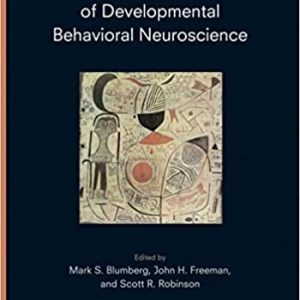Neuromuscular Fundamentals: How Our Musculature is Controlled 1st Edition
Neuromuscular Fundamentals: How Our Musculature is Controlled 1st Edition
by Nassir H. Sabah (Author)
FORMAT: ORIGINAL PDF/PRINT REPLICA
- Publisher : CRC Press; 1st edition (November 30, 2020)
- Language : English
- ISBN-10 : 0367456923
- ISBN-13 : 978-0367456924
$8.99
Description
This book is rather unique in its approach and coverage. The approach is essentially that of an engineering textbook, emphasizing the quantitative aspects and highlighting the fundamentals and basic concepts involved. The coverage progresses in a logical and systematic manner from the subcellular, starting with the electrophysiology of the cell membrane, then proceeding to synapses, neurons, and muscle, before considering neuronal motor ensembles and the neuromuscular system as a whole. Simple, clear, and comprehensive explanations are given throughout. After an introductory chapter on some background material in biology, biophysics, and chemical kinetics, a substantial part of the book (Chapters 2-8) necessarily covers in considerable detail the basic components and processes that underlie the electrical and associated activities of the nervous system. The remaining chapters of the book (Chapters 9-13) focus on the neuromuscular system, starting with the structure of muscle cells, the generation of force by muscular contraction, and muscle receptors. The last chapter examines aspects of the control of movement, motor learning and memory, the maintenance of posture, and locomotion, and critically examines some of the theories that have been advanced to explain how movement is controlled. The book is intended for undergraduate or graduate students in the natural sciences, mathematics, or engineering who seek a deeper understanding of the fundamentals of neuroscience and the somatomotor system, in accordance with the aforementioned objectives. The book can serve as a textbook for a one-semester course on the neuromuscular system or as a reference in a more general course on neuroscience.
Showing 1–12 of 1704 results
-

Clinical Neurology and Neurosurgery
$8.99 Add to cart -

Clinical Neuroanatomy Made Ridiculously Simple 5th Edition
$9.99 Add to cart -

Clinical Neuroscience: An Illustrated Colour Text the 1st Edition
$8.99 Add to cart -

Clinical Laboratory Medicine for Mental Health Professionals 1st Edition
$9.99 Add to cart -

Clinical Neuroanatomy 30th Edition Thirtieth ed
$15.99 Add to cart -

Challenging Concepts in Interventional Radiology (Challenging Cases) 1st Edition
$11.99 Add to cart -

Case Files Neuroscience 2/E (LANGE Case Files) 2nd Edition
$8.99 Add to cart -

Cambridge Textbook of Neuroscience for Psychiatrists 1st Edition
$11.99 Add to cart -

Vertebrobasilar Ischemia and Hemorrhage Clinical Findings, Diagnosis and Management of Posterior Circulation Disease 2nd Edition
$16.99 Add to cart -

Vesicoureteral Reflux From Diagnosis to Treatment
$11.99 Add to cart -

Verbal Behavior Targets
$8.99 Add to cart -

Varieties of Anomalous Experience: Examining the Scientific Evidence Second Edition 2e (Dissociation, Trauma, Memory, and Hypnosis)
$11.99 Add to cart





